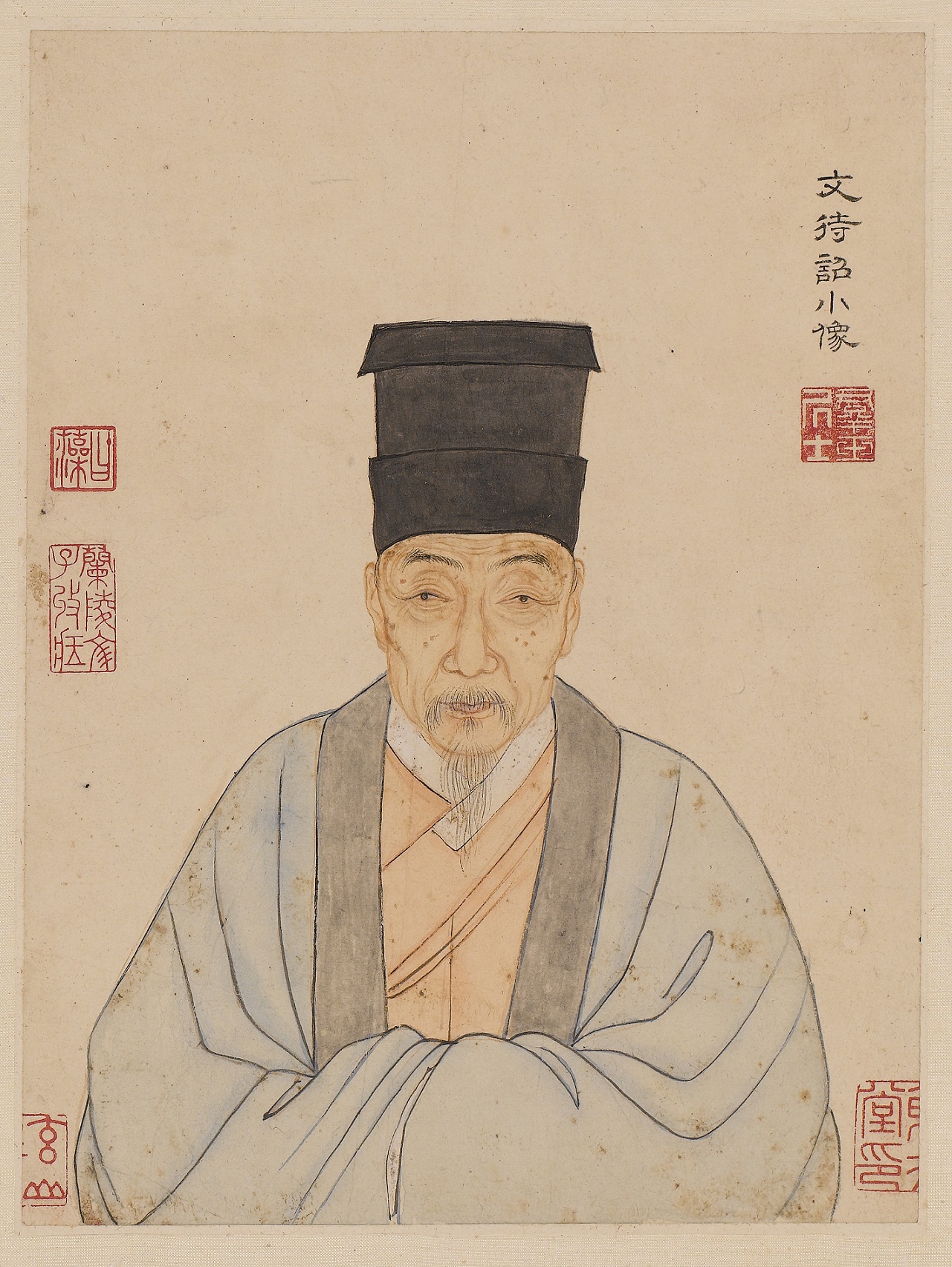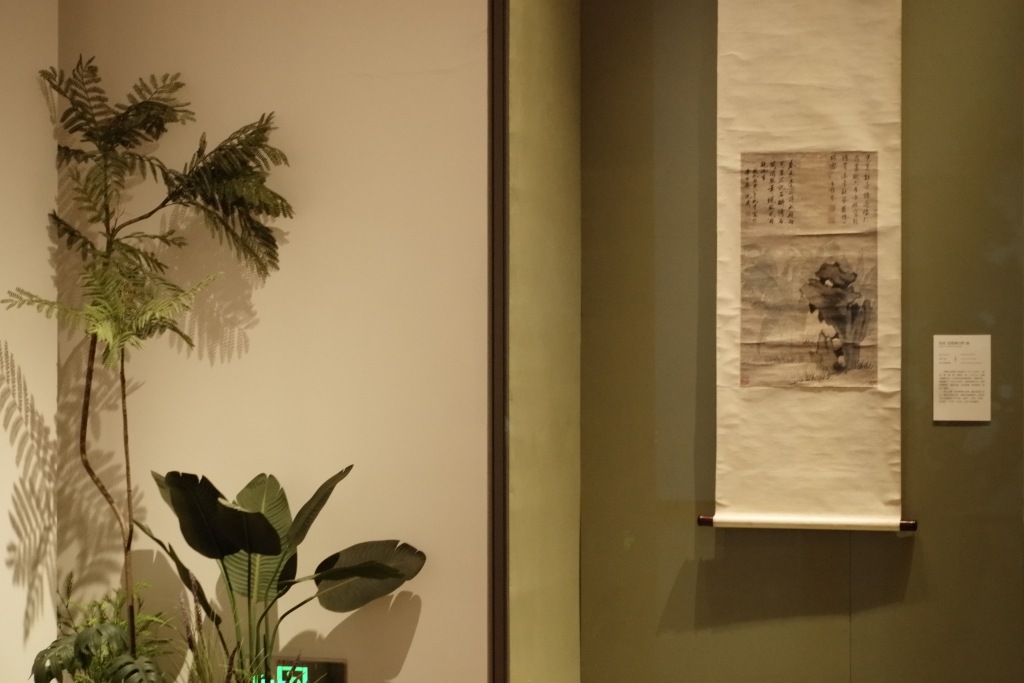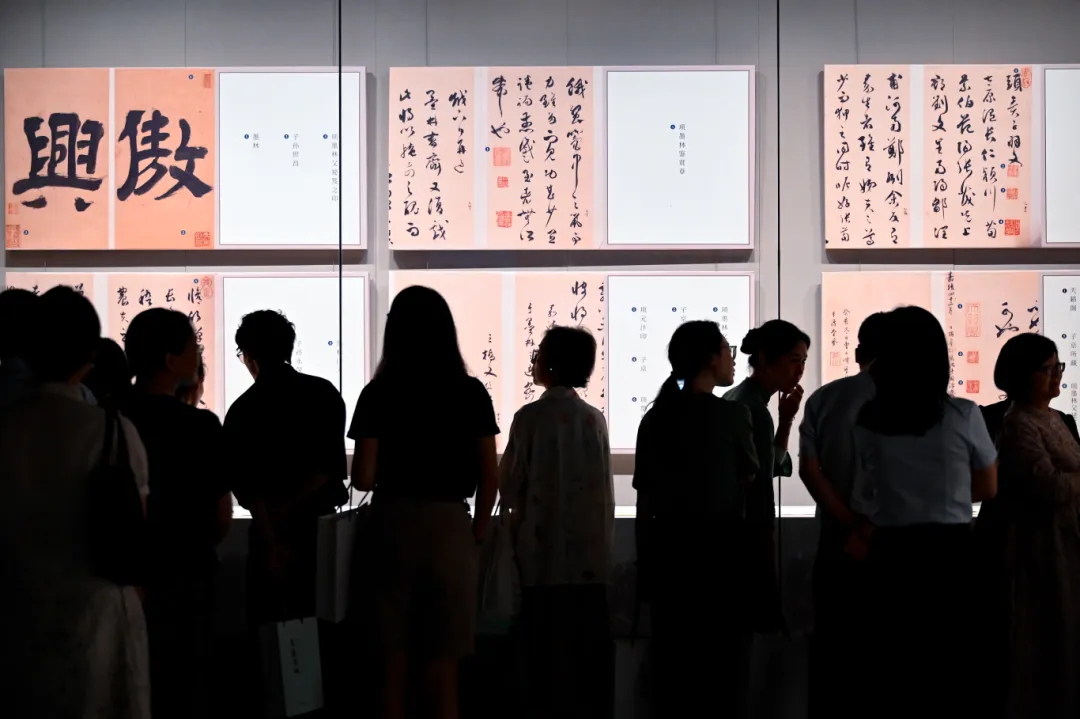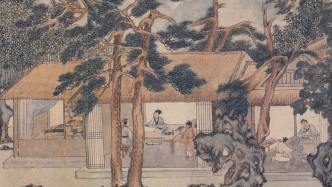
In the Ming Dynasty, Wen Zhengming wrote two volumes of "Zhen Shang Zhai Tu" for his friend Hua Xia. The various changes in their spatial layout and content reveal the functional differences between the two volumes of images and the changes in the creative situation. Compared with the open elegant gathering space of "Shangboben", "Guoboben" rejects the entry of "others" and turns to a private closed space. At the same time, the changes in the collections in the study room also more accurately present the collection interest of Huaxia, and can be traced back to the family heritage of Hua's, making the ancient space more personalized. Combining the information revealed in the content and writing time of "Zhenshangzhaiming" and "Zhenshangzhaifu" after the two volumes of images, this paper further finds that the reason for Wen Zhengming's second painting may be related to the disappearance of Huaxia and its own collections. related. In this sense, "National Expo Book" has become China's "picture biography", and it also carries Wen Zhengming's feelings and remembrance of the old time of true appreciation.
The basic situation of the two volumes of "True Appreciation of Zhai Tu"
In the creative career of Wen Zhengming (1470-1559), it is rare to draw the same subject twice, and thus is particularly striking. Among them, Wen Zhengming's "True Appreciation of Zhai Tu" for his friend Hua Xia (about 1494-about 1567) is like this. The Chinese character Zhongfu, No. Dongsha, is a collector in Wuxi area, sometimes known as "Jiangdong Giant Eye", Zhenshangzhai is the studio and residence he bought to store his collection. Since the name of the study is the same as the alias of the owner, both reflect its spiritual interest, so the two "Zhen Zhai Tu" can be examined under the context of the alias map.

Figure 1 (Ming) Wen Zhengming's "True Appreciation of Zhai Tu", 1549, ink and color on paper, 36×107.8 cm, collected by Shanghai Museum
The first volume of "True Appreciation of Zhai Tu" (picture 1) is inscribed in the upper left corner of this piece with the words "Jiajing Ji Youqiu (1549), Zhengming is Hua Jun Zhongfu's portrait of Appreciating Zhai Tu, at the age of eighty" . The first part of the quotation is the three characters "Zhenshangzhai" written in official script by Li Dongyang. After this panel is Wen Zhengming's "Zhenshangzhai Ming" written in official script and regular script respectively, and Fengfang (1494-1569) for Huaxia. The "True Appreciation of Zhai Fu". This volume was collected by Hua Xia, Xiang Dexiang (the first work) (1570-1630), and Song Lu (1634-1713). It was collected in the Neifu during the Qianlong period and is now in the Shanghai Museum (Shangbo Ben). Yu Fengqing's "Yu's Calligraphy and Painting Inscriptions and Postscripts", "Shiqu Baoji", Wu Sheng's "Daguanlu" and so on have recorded it. The second volume of "True Appreciation of Zhai Tu" (picture 2) has "Jiajing Dingsi (1557), Zhengming's portrait of Zhongfu Huajun, in the upper part of the middle of the picture, and there are eight in eighty-nine years" 's signature. At the back of the painted heart is another "True Appreciation Zhai Ming" written in regular script by Wen Zhengming. This volume was collected by Huaxia, Xiang Yuanbian (1525-1590), Gao Shiqi (1645-1703), and An Qi (1683-?), and later flowed into Qianlong's palace, and was given to Sun Yuwen (1833-1899) during Guangxu period. It is kept in the National Museum of China (National Museum). This volume is recorded in "Shiqu Baoji", An Qi's "Moyuan Huiguan", Wu Sheng's "Daguanlu" and other books. After the appraisal of Xu Bangda, Liu Jiu'an, Yang Renkai, and Lao Jixiong, the two paintings are considered to be genuine works, and the national blog is "more refined".

Figure 2 (Ming) Wen Zhengming's "True Appreciation of Zhai Tu", 1557, ink and color on paper, 28.6×79 cm Collection of the National Museum of China
However, after reviewing the two scrolls, it is puzzling that Hua Xia, the first painter of "True Appreciation of Zhai Tu", did not leave any traces on it. On the contrary, later collectors stamped seals or made inscriptions on the heart of the painting and the end of the scroll. Such two important pictures depict the works of the collector Zhai Shi, why can't they see the owner's seal? Since there is no question of the authenticity of the images, has Huaxia seen these two images? This question may seem simple, but it is actually a prerequisite for further in-depth discussion. After consulting other collections held by Huaxia, it is not difficult to find that he only recorded in Yan Zhenqing (709-785) "Posts of the Ambassador of Liu Zhong" (collected by the National Palace Museum, Taipei), "Long Live Tongtian Posts" (collected by the Liaoning Provincial Museum), Zhang Xu (approx. 675-about 759) "Four Posts of Ancient Poems" (collected by the Liaoning Provincial Museum), Wang Meng (?-1385) "Recluse in Qingbian" (collected by the Shanghai Museum) and a few other works are stamped with the "Huaxia" seal and the shape of a gourd " "True Reward" seal, but more collections have neither seals nor written inscriptions. From this, it can be judged that Huaxia rarely has the habit of seals or inscriptions, and "True Appreciation of Zhai Tu" is not a special case.
In addition, judging from the inscription time of the two volumes of "True Appreciation of Zhai Tu", they were both made during Huaxia's lifetime. And in the Jiajing Wuwu (1558), one year later than the "National Expo", Wen Zhengming also wrote three old poems of five ancients and gave them to Huaxia. Therefore, it is extremely unlikely that he did not receive the "True Appreciation of Zhai Tu", and he can be confirmed as the first reader of the two hand scrolls.
So why did Huaxia ask Wen Zhengming to draw the "True Appreciation Zhai Tu" twice before and after? How has the content of the two volumes of images changed? Is its nature and function different? This series of questions still needs to be further analyzed and answered.
1. From Open to Private: The Disappearance and Transformation of Yaji Space
If you first see the two paintings of "True Appreciation of Zhai" but are not familiar with the details, the first thing the viewer will notice is the difference in the overall spatial characteristics of the two volumes of images. When Wen Zhengming first described Zhenshangzhai, he constructed a total of three spaces: the first layer is the oval table where the study is located; the second layer is the slope where the lake and stone are located, as well as the visitors, the stream bridge and the bamboo bushes after the Zhaizhai. The connected annular space; the third floor is the distant mountain behind. This triple space takes the study as the core and expands out layer by layer along the diagonal direction. When Wen Zhengming made the second drawing, he made a bold cut compared to the first one. He abandoned the external environment on the left side of "Shangboben", and only selected about two-thirds of the content on the right side. depict. Under this change, "Guobo Ben" presents a structure of "inside and outside": "inside" is the area where the study is located; while "outside" is a circular layout composed of slope stones on the left and right sides. It also takes the study as the core of the space extension, but in terms of the overall image, the visual focus of "National Bo Ben" has shifted backwards.
Along with the change in the overall space of the image is the structure of the fasting room. The study in "Shangboben" is divided into three rooms: the main hall in the center is undergoing appreciation activities, on the right is a tea house, and on the left is a study with a guqin. The "Guobo Ben" has been reduced from three to two: the main hall is still for appreciating activities, but the tea room on the side has disappeared, and the study has been replaced from left to right, especially the guqin next to the bookshelf is replaced by a couch .
So, what does this series of changes in internal and external spaces indicate? After a careful comparison of the images in the two volumes, it is not difficult to find that when Wen Zhengming drew "True Appreciation of Zhai Tu" for the second time, he omitted the "landscape", "stream bridge" and The description of "visitors" also abandons Zhai Nei's explanation of "tea affairs" and "qin art" activities. In the current research results, most scholars attribute this change to the further attention and shaping of China's general "literati" identity to the specific "collector" identity. Because the thatched cottages in the "Shangboben" and the "tea affairs" and "qin art" activities that reflect the elegant taste of the literati, more of the ideal life that the literati generally expects is presented. This is a common expression, not a unique annotation of Huaxia. In the second depiction of Zhen Appreciation Zhai, Wen Zhengming discarded these universal contents and only focused on the appreciation activities of Hua Xia and guests, which can better highlight Hua Xia's identity as a collector by comparison. This is indeed a way of understanding this change, but it also reveals another layer of more important information.
If you carefully examine Wumen painter's alias map and related works, whether you are in a natural landscape or a famous garden thatched cottage, whether it is a large-scale elegant gathering or a small-scale visit, you can find that "friends" runs through it. an important content. Correspondingly, some suggestive elements are often used in the paintings to express this kind of literary nature. The interior of the pavilion or study is often painted with the master reading books or leaning on the railing and looking at the host and the boy who is boiling water and brewing tea, who are waiting for the arrival of the guests. ; In addition, on the mountain trails or on the bridges of the streams, you can often see high scholars with sticks or scholars who visit friends with pianos, and they are about to go to the pavilion or study to join their peers. Therefore, the guqin, the tea ceremony, the double pine tree, the bridge of the stream, and the high-ranking staff have become the symbolic elements that constitute this type of painting. Then on this basis, what kind of space are they organized in, and what are the representative schemas?

Figure 3 (Ming) Wang Fu's "Shanting Wenhui Tu" scroll, ink and color on paper, 219×87.6 cm, Collection of the National Palace Museum, Taipei
When the pioneers of Wumen and their predecessors painted scenes of elegant gatherings or gatherings of friends, they often placed them in the vast natural landscape, and organized the pictures in a vertical axis-like vertical structure: the upper part is the majestic mountain, and the lower part is the Wenhui. the pavilion. Such as Wang Fu (1362-1416)'s "Shanting Wenhui Tu" (Fig. 3), Liu Jue (1410-1472)'s "Qingbai Xuan Tu" (collected by the National Palace Museum, Taipei), and Shen Zhou (1427-1509)'s "Wei Hui Tu" (picture 3) This is the case with "Garden Elegant Collection" (collected by the Liaoning Provincial Museum). However, the early Ming Dynasty alias map that has been seen so far - Du Qiong (1396-1474)'s "You Song Tu" (Figure 4) (collected by the Palace Museum) is depicted horizontally. Just replace the mountain originally located at the top in the vertical composition to the left, and the text meeting scene located at the bottom is enlarged and replaced to the right. More ingeniously, James Cahill once pointed out that the contents of this scroll are highly similar to his other work, "Deep Fragrance" (the location of which is unknown), except that the former is a short hand scroll and the latter is a short hand scroll. Change to vertical vertical axis. This just provides a clear perspective for us to observe the two main parts with the same content—the landscape environment and the organizational relationship of the Huiyou Pavilion in different spatial forms. From this, we can also find that the early Wumen images liked to use vertical structures, but had different considerations for aliases.

Figure 4 (Ming) Du Qiong's "Friends Pine" volume, ink and color on paper, 28.8 × 92.5 cm collection of the Palace Museum
By the time of Tang Yin (1470-1524) and Wen Zhengming, the alias map and the scenes of Wenhui and elegant gatherings had been relatively fixed in horizontal space, mostly with a diagonal layout of "one river and two banks". Although the proportion of landscape in the painting is lower than that of the early Wumen period, and instead the study and thatched cottage are used as the prominent visual centers, the overall vision of the schema used is still relatively broad. Among the more typical ones are Tang Yin's "Xishan Thatched Cottage" (collected by the British Museum), Qiu Ying's (about 1502-about 1552) "East Forest" (collected by the National Palace Museum, Taipei), and Wen Zhengming's "Luoyuan Thatched Cottage" ( Collection of the Palace Museum), "East Garden" (collected by the Palace Museum), "Huxi Thatched Cottage" (collected by the Liaoning Provincial Museum), "Mujing Secluded Residence" (collected by the Anhui Museum), etc.
By observing the composition of these elements in the space, we will find that they not only show the elegant life of literati, but also make the picture have the "inclusive" nature of looking forward to friends and guests. In particular, the mountain path or the bridge over the stream leading to the pavilion and the house in the painting is the link between the host and the guest, not only implying the openness of the space, but also allowing the two activities of "waiting" and "going to" in the painting. There is a predictable ending in the stretch of time.
From this, let's go back to Wen Zhengming's "True Appreciation of Zhai Tu", the above-mentioned elements have been fully and completely reflected in the "Shangbo Ben". The scene in the painting is also relatively open, and the audience can clearly see the preset path of the visiting friends who are about to cross the bridge to the study. Under such spatial arrangement and use of elements, the first volume of "True Appreciation of Zhai Tu" has a distinct nature of "gathering" and "meeting friends", becoming an "open" space that looks forward to the arrival of friends and friends.
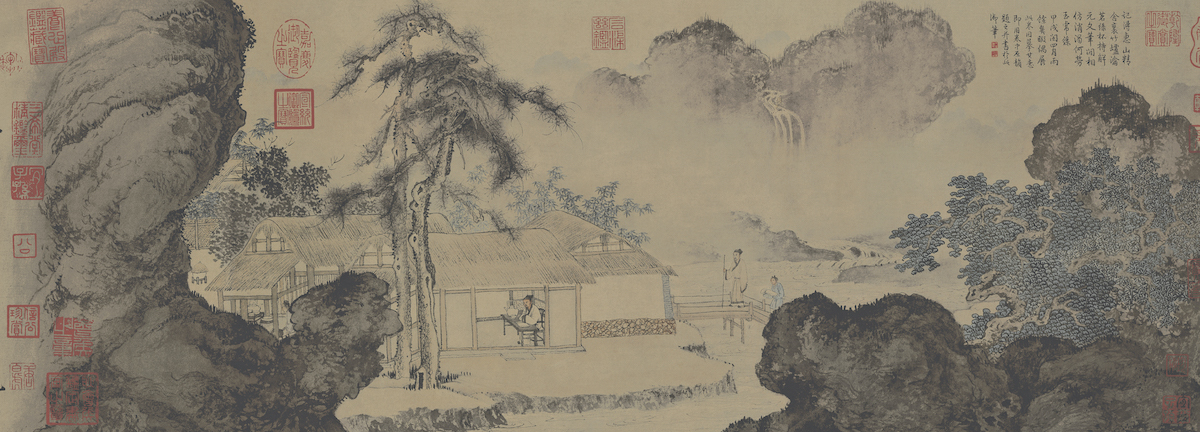
Figure 5 (Ming) Tang Yin's "Shi Ming Tu" volume, ink and color on paper, 31.1 × 105.8 cm collection of the Palace Museum
In contrast, "National Expo Ben" not only deletes the relatively open natural environment outside, but also hides the walking path leading to the study, but also makes the slopes on the left and right sides form a semi-circle, forming an inaccessible enclosure space. This kind of layout is very special in the related works of Wen Zhengming himself and others of the Wu family. A similar spatial structure can also be seen in Tang Yin's "Shi Ming Tu" (Figure 5). The two boulders in front block the audience's sight like a curtain, forming an encirclement with the rocks behind. However, this picture still depicts a high-ranking scholar with a violin, and the fog in the distance makes the scene blurry, bringing more imagination to the picture. Perhaps there is a hidden path to the study. This kind of treatment also breaks the closedness of the space, unlike the national blog "True Appreciation of Zhai Tu", which generally has a clear and identifiable inner and outer boundary.
At the same time, the structural changes in the interior of the "Guobo Ben", as well as the appearance of the couch in place of the guqin, have further dispelled the elegant attribute of the image. The couch is also called "sleeping alone". As the name suggests, it is only suitable for one person to sleep and rest. In the eyes of literati in the Ming Dynasty, the couch had multiple functions of "the watch of the swallow, the exhibition of scriptures and history, the reading of calligraphy and painting, Chen Dingyi, Luo Yaohe, and pillow mat". As a result, the side hut in the "National Museum of Art" has become a private area juxtaposed with the main hall, so that the owner can appreciate the antiquities independently. Under this contextual change of internal and external space, the fast room in the "National Expo" has become more clearly a private space for "true admirers" to exchange artistic works and refuse "visitors" to enter.
2. The main body of the Jiangu space: Ding Yi and Hua Shi Xiaoyi
At the same time as the overall context of the image changes, the ancient space in the main hall and the utensils and furnishings in it also have subtle changes, reflecting more and more abundant information. In the images of the two volumes, the appreciation activities that took place in the main hall are in the form of a dialogue between the host and the guest, as if they were evaluating the hand scrolls being exhibited. In addition, the two also placed some ancient books, scrolls and utensils waiting to be appreciated. There are some stationery items scattered on the desktop of "Shangboben" (Fig. 6), but they do not have prominent features and corresponding recognition. It is difficult for us to compare these utensils with Huaxia's collections. However, on the vertical tabletop of the "National Expo Ben", there is a group of relatively concentrated bronzes (Figure 7), which is very eye-catching. Does this change indicate that the bronze ware is a new collection of Huaxia in the past eight years? This may not be the case. In the "Zhen Shang Zhai Fu" written in the same year as the "Shangbo Ben", there is already a prompt to "try the golden cauldron of the Marquis of Yin". It can be seen that the collection of ding and Yi has existed since the first drawing, not a new one. type of increase. So what does this change indicate? What is the real collection situation in Huaxia?
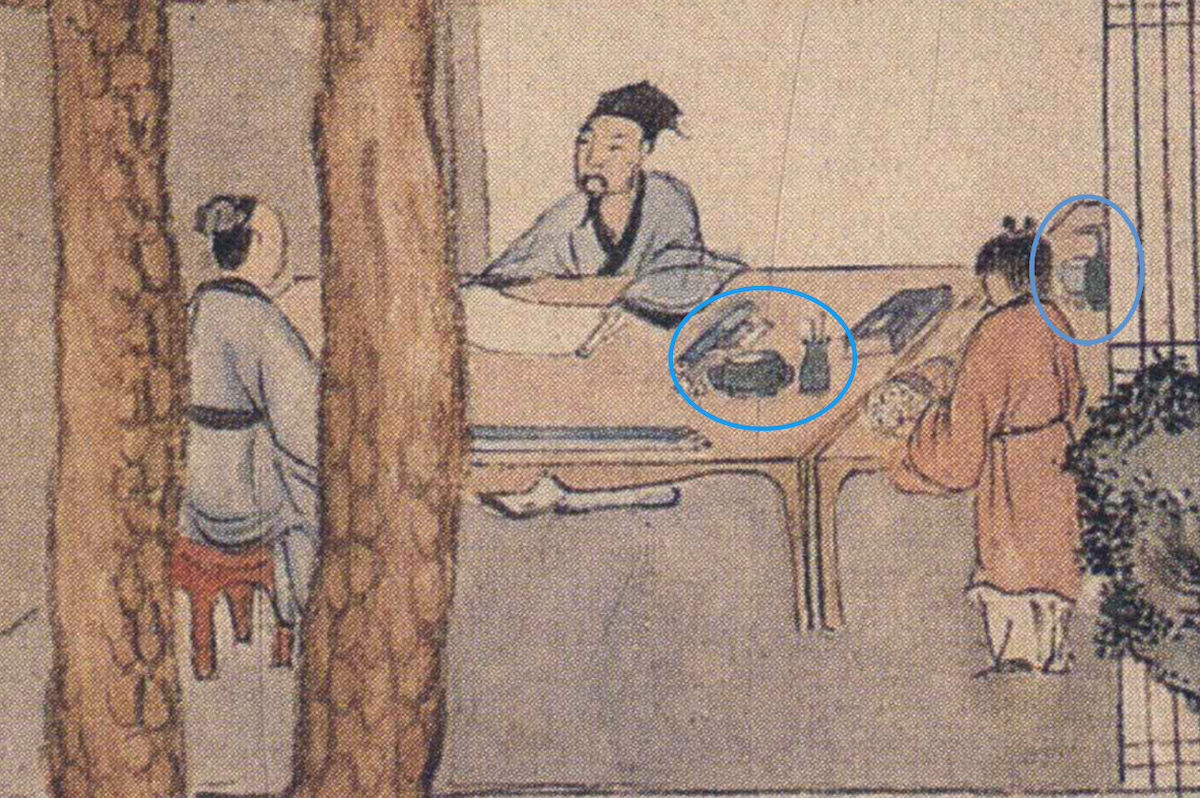
Figure 6 The details of the desktop utensils in the "True Appreciation of Zhai Tu" on the blog
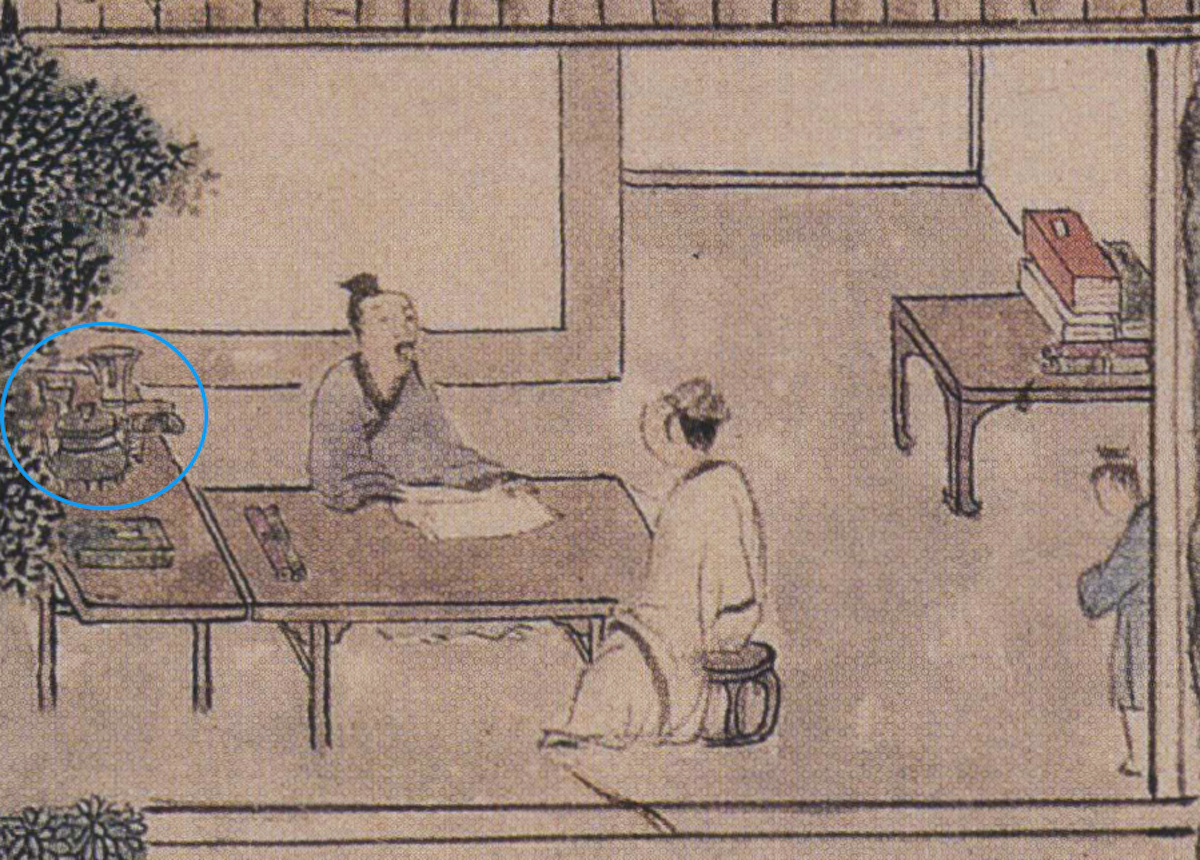
Figure 7 The details of the desktop utensils in the National Expo "True Appreciation of Zhai Tu"
Fengfang's long and monumental work "True Appreciation Zhai Fu" for Huaxia is an important material for academics to understand Huaxia's collections. It focuses on 18 calligraphy, seventeen paintings, four inscriptions, thirteen calligraphy and Thirty-eight ancient books. In addition, Wang Pingyu's "Coral Net" and Bian Yongyu's "Shigutang Calligraphy and Painting Collection Examination" also listed many items in the Huaxia collection. The number is slightly different from the description in Fengfang Fuwen, but the proportions of various collections are consistent. That is to say, in Huaxia's collections, scrolls composed of ancient books, law books, and paintings should occupy the largest proportion, and this is also in line with Fengfang's general theory on Hua's collections: "The Books of the Six Classics, the Theories of Confucianism, and the History of All Dynasties In fact, in the two volumes of "True Appreciation of Zhai Tu", the collections that Wen Zhengming described the most are also ancient books and scrolls . Most of them are neatly stored on the side bookshelf, which is an important part of the study space.
But from this point of view, bronze ancient wares are not more than quantity in the collection of Huaxia, so what is special about them? In the several records of Huaxia in the local chronicle, it is said that he has the "Three Generations of Ding Yi", and it is ranked first. Wen Zhengming also clearly mentioned that Zhongfu "is especially fond of ancient calligraphy and pictures, ancient and modern stone carvings and Ding-Yi utensils" in "True Appreciation of Zhai Ming". In addition, it is also contained in the epitaph written for him by the Huaxia people: "Danjingjingjianyuan, daily research to be sure, all the ancient Jin and Wei scriptures are engraved on gold and stone, and they are sold in gold. All the collections are the best drama relics, and he has pictures and utensils. All kinds of quintessence, pleasing to the eye, and authentic." Through these brief descriptions, it is obvious that Huaxia's personal preferences: he particularly attaches great importance to the collection of law books and gold and stone, and Dingyi belongs to the category of gold and stone. It is the object that Huaxia is willing to buy, and then also painting and other artifacts. Therefore, according to the descriptions in the literature, it can be found that the collection of gold and stone, represented by the three dynasties of Dingyi, is the oldest and most important type of collection in China. Wen Zhengming painted the bronze tripod and Yi in the "National Book", instead of the "Shangbo Book"'s general description of stationery items, which can be said to more accurately present the characteristics of Huaxia's collection and representative collections.
Regarding the taste of connoisseurship in the Ming Dynasty, it can be said that it has undergone a transformation from "respecting the ancients" to "respecting the present", and many scholars also have special articles to discuss this. Wang Shizhen (1526-1590) and Shen Defu (1578-1642) criticized the phenomenon of chasing new things since the middle and late Ming Dynasty. It has also been cited many times as an important historical material for observing the changes in the taste of collections in the Ming Dynasty. But in fact, this "debate between the past and the present" is just the opposite confirmation of the upsurge of "chasing the past". "Due to the popularity of enthusiasts, the number of collectors is increasing, and the number of ancient artifacts is limited, which will inevitably lead to the approach from ancient times." Ye Kangning's view can be said to be very pertinent. At the same time, it is further explained that the possession of three generations of Dingyi, Wei and Jin calligraphy and famous paintings of the Tang and Song Dynasties is still a sign of the collector's strength. The narrative method used by Wen Shi when he introduced the Huaxia collection in "True Appreciation of Zhai Ming" clearly embodies this idea.
But in addition to the competition between the past and the present, which made the bronze wares of the three dynasties more important, at the personal level, the significance of Zhong Ding Yi wares to China is probably not just to show off the ancient and powerful collections of their collections. It is worth noting that in Huaxia's epitaph, his clansman said after he mentioned his hobby of Bogu and self-entertainment:
Although Jun is entrusted with the history of love, but Ya is a housekeeper, especially in the affairs of relatives. When you steam and taste it when you are young, you must be shy, and when you encounter taboo sacrifices, you will be mourning. Although the younger brothers lived and divided their careers, the ancestral temple was set up as the king's house, and the king emphasized the patriarchal law. After the sacrifice is completed, Xiang Yan set.
This reminds us to pay attention to another layer of meaning that the bronze ancient utensils appearing in "Zhenshangzhaitu" may have. At the end of "Golden Stone Records" written by Zhao Mingcheng, there is a postscript written by Li Qingzhao, in which he recalled that when the two were fleeing the war, her husband explained how to deal with the items she was carrying: "It must not be done, first go to the baggage, and second Clothes and quilts, secondary books and scrolls, secondary ancient utensils, and only the so-called ancestral utensils can be self-reliant, and both survive and die, and do not forget them.” Therefore, in the eyes of scholars and officials of the Northern Song Dynasty, the three dynasties Dingyi was the ancestral utensil of the temple, with a very serious clan imagery. Although it is undeniable, "since the early Northern Song Dynasty, the scholars and officials tried to avoid being regarded as 'playing' with the mentality of reproducing the three generations. In the Southern Song Dynasty, the marginal people of the official officials finally gave birth to a new concept of the three generations of bronzes. The general trend is that the three generations care gradually. The old-fashioned mentality of thin, ancient and modern is gradually becoming stronger, and the image of the bronze ware of the three generations was transformed again, and it was able to settle in the leisure life of the Song people.” And this antiquity mentality further inspired the material and cultural life of the Ming Dynasty. Bronze wares are often used as vases, incense burners, etc. However, in "True Appreciation of Zhai Tu", the group of Ding Yi, which is located on the side of the master Huaxia and almost parallel to it, is obviously not in use, and it also avoids the self-entertainment attribute that is regarded as "playing with antiquities". If compared with the relaxed atmosphere and entertainment in Du Jin's "Ancient Picture" and Qiu Ying's "Bamboo Courtyard", the bronze tripod and Yi in "True Appreciation of Zhai Tu" should have a more serious meaning.
Huaxia's preference for the collection of Jinshi Dingyi, as well as Wen Zhengming's meticulous depiction and deliberate presentation of such antiquities in the "National Expo", may be difficult to separate from the clan imagery they originally had in the minds of scholars. This is especially true for Huaxia, who is devoted to family and patriarchal law. Although Wen Zhengming's communication with Huaxia is mainly aimed at collecting and collecting, Wen Zhengming is also highly involved in the shaping of the culture of filial piety and righteousness in the Hua family, and he should also have a good understanding of Huaxia's conduct. After the renovation of the Huaxiaozi Temple was completed, Mr. Wen wrote "Postscript" for "Xiu Zu Temple's Annual Ceremony Zhuwen" written by Wu Kuan (1435-1504). At the same time, he also wrote a large number of inscriptions and epitaphs for the family, such as Huaxia. The tombstones of his parents and grandparents were written by Wen Zhengming. If it is compared with Fengfang's "True Appreciation of Zhai Fu" again, the purpose of the bronze tripod Yi in the picture will become clearer. While describing the Huaxia collection, Fengfang also spent a lot of time introducing the origin of Huaxia, further pointing out that "behind the Huaxia collection there is a family with traditional virtues of filial piety and benevolence, which makes Huaxia's aspirations different from ancient times. this'". So, isn't the antiquarian space in the national blog "True Appreciation of Zhai Tu" a more intuitive visual presentation of this biography?
Therefore, Wen Zhengming's drawing of Zhong Dingdun Yi into it is not only a further illustration of the strength of Huaxia's collection, but also has a far-reaching purpose, that is, through their heavy historical images, to praise Huaxia's filial piety and virtue-based Bogu act. Through this change in detail, the directly visible objects in the "National Museum Book" (different from the ancient books and scrolls depicted as "white scrolls" or stored) further link Huaxia's collection activities with their personal conduct and family heritage. Hook up to create a more subjective space for antiquity.
3. Pictorial Biography: Lost Collections and Reconstruction of "True Rewards"
After comparing and analyzing the space, content and details of the picture, another question arises: what is the reason for the series of changes in the picture? Does this suggest differences in the nature and function of the two volumes of images? In the face of these doubts, the additional information outside this page once again provides a path of inquiry.
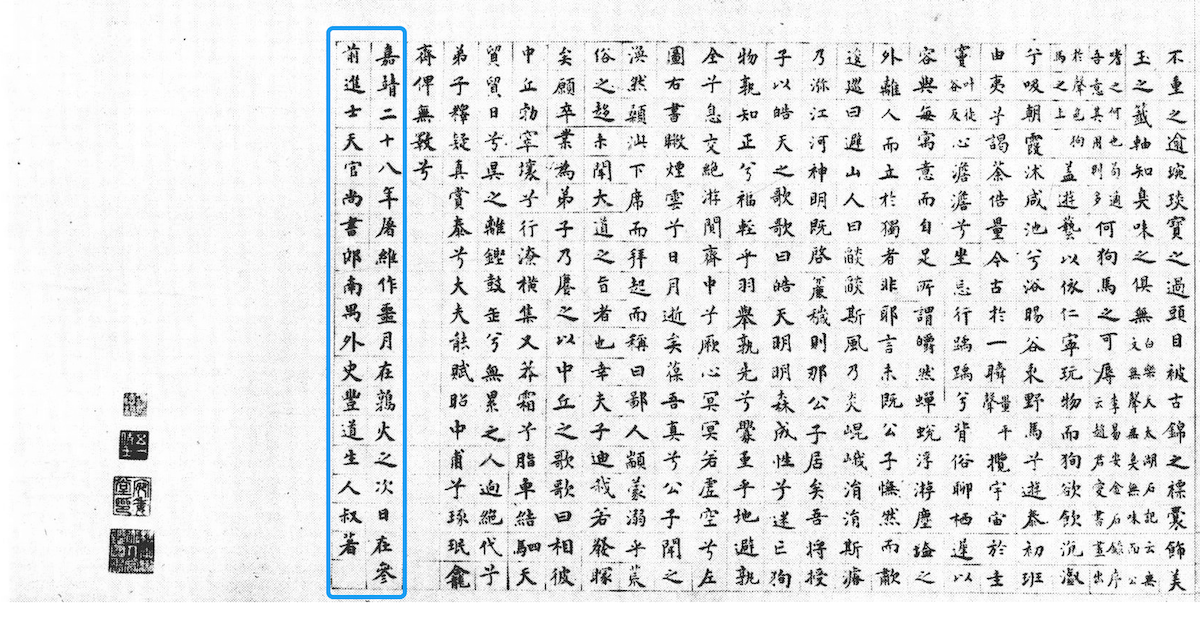
Figure 8 The inscription of "Zhenshangzhaifu" at the end of the volume of the Shangbo edition without the word "Bianshu" and the seal of Fengfang
On the occasion of Wen Zhengming's first drawing in 1549, Fengfang stayed in Huaxia's home for a long time, researching the collection for him and writing the long and huge work "True Appreciation Zhai Fu" mentioned many times above. Chen Feirong once speculated that the long article after the "Shangbo Ben" was not written by Fengfang himself: first, the handwriting was different from the regular script style inscribed on other Huaxia collections by Fengfang; second, the inscription after the Fu was "" It was written by Shi Fengdao outside Nanyu, but there is no word "Bianshu", and there is no Fengfang seal after the inscription. (Picture 8) When the author reviewed the appraisal opinions of the seniors of the painting and calligraphy appraisal team on the "Zhen Zhai Zhai Tu", I found that Mr. Yang Renkai's comment contained this line: "Fengfang Xiaokai Wusilan "Zhen Zhai Zhai Fu Concurrent Preface". ”, this fu has tens of thousands of characters, written by Qianren on behalf of the author, and the calligraphy is recent and excellent, and it is a description of Hua’s collection of paintings and calligraphy.” This further proves that the “True Appreciation Zhai Fu” is indeed not Fengfang’s own handwriting. This also reasonably explains why the "Zhenshangzhaifu", which was later inscribed on the "Shangboben" in 1549, was mounted after the "Zhenshangzhai Ming" (Figure 9) written in 1557. Judging from the situation of the seal of Zhenshangzhaifu, the client who asked Wen Jia (or at least a descendant of Wen's family) to supplement the book is almost certainly the collector of this volume after Huaxia - Xiang Dushou , Xiang Dezong and his son. Although this fu was reprinted by later generations, the writing of the content was completed in the same year as the "Shangboben" drawing.

Figure 9 "True Appreciation Zhai Ming" in regular script after the blog
However, at the same time, it will make people even more confused. Why are the three copies of "True Appreciation of Zhai Ming" attached to the two volumes of images all completed in 1557 when the "National Boon" was drawn? That is to say, why is there an obvious time misalignment between the inscriptions after "Shangboben" and their images?
It is worth noting that in 1549 Fengfang wrote "True Rewards to Zhai Fu", it was written that "Hanlin Wengong is a picture and an inscription, and it is also interesting." This suggests that Wen Zhengming may have already written the manuscript of Zhenshangzhaiming, but he has not written it formally. It was not until Wen Zhengming painted for Huaxia for the second time in 1557 that he completed the book "True Appreciation of Zhai Ming" three times in March and April. If you carefully examine the painting and calligraphy exchanges between Wen Zhengming and Huaxia, you will find that this situation is not an exception, because in the sight of July of the same year, Wen Zhengming wrote the "Long Live Tongtian Post" for Huaxia many years ago. The postscript is written in the back of the volume. However, what was the reason that prompted Wen Zhengming to write a biography of Huaxia again in 1557?
Combining the research results of several scholars on Wen Zhengming and Huaxia's collection, the author finds that the time when Wen Zhengming was the second time for Huaxia's mapping was quite special in their collection experience:
Thirty-five years after Jiajing (1556), Wen Zhengming's collections began to spread out in more places, and the flow direction was also clearer, mainly from Jiaxing Xiang Yuanbian. ... Xiang Yuanbian has always had the habit of recording the origin and price of his collections. According to his records, from the thirty-fifth year of Jiajing (1556) to the thirty-eighth year of Jiajing (1559), when Wen Zhengming died, he repeatedly Purchased ancient calligraphy and painting and works by Wen Zhengming himself from Suzhou Wenjia.
So what is the situation in Huaxia? According to Huang Peng's research: "Huaxia's family declined in his later years, and his collections began to disperse when he was alive. Some were bought by Suzhou collectors including Wang Shizhen, and many went into Xiang Yuanbian's Tianlai Pavilion in Jiaxing." If we use the more credible birth and death years in China - Hongzhi Jiayin (1494) to Longqing Dingmao (1567) - to calculate, Wen Zhengming was 63 years old when Wen Zhengming made the second painting in 1557. , for Huaxia, who lived 73 years old, it is indeed in his old age, so his collections are likely to have begun to flow out. In Li Wankang's research and statistics on Xiang's old collection of paintings and calligraphy, he once made a table of works whose purchase time was relatively clear. One of them is the "Book of Yu Yunwen Zhu Mosquito" volume that Xiang Yuanbian purchased from the Huaxia family in the thirty-ninth year of Jiajing (1560). In addition, according to Su Xing research, the collections that flowed from Zhenshangzhai to Tianlai Pavilion include Yan Zhenqing's "Liu Zhong's Posts", Zhang Xu's "Four Posts of Ancient Poems", Yang Ningshi (873-954) "Immortals' Living Law Posts", Huang Quan (about. 903-965) "Picture of Birds Gathering in the Willow Pond", Yan Ciping (who started his art activities in the Longxing Dynasty in the Southern Song Dynasty) "Cold Rock with Snow", Zhao Mengfu (1254-1322) "Two Goats", "Drinking Horses in the Autumn Suburbs" , Wang Meng's "Recluse in Qingbian" and so on. It is only due to the limited information in the original documents that the transaction time of many works cannot be determined, but it should be roughly the time frame of about ten years before Huaxia's death.
Therefore, judging from the relatively special time point in 1557, the original intention, nature and function of the national blog "True Appreciation of Zhai Tu" should be different from that of the "Shangbo Version". Huaxia once again asked Wen Zhengming to write the room for his pictures, and at the same time, he added three additional books to state the essence of his collection. The change. The important purpose of the creation of the "National Boon" should be to preserve the "true appreciation" time on the scrolls when the collections flow out, so as to be passed down to future generations as a summary and portrayal of the Chinese "biographical" style. The disappearance of the elegant collection space in the image and the authentication of the ancient space for Huaxia’s personal belonging should also be based on this situation. However, does the commemoration of this "true appreciation" time belong only to Huaxia? How does the outflow of collections affect Wen Zhengming? How will he feel?
Constrained by economic conditions, Wen Zhengming's collection is actually relatively limited, so viewing and appreciating other people's collections has become an important way for his art management activities. Huaxia’s collections are based on many scriptures, and Wen also learned a lot from these dramas, and some of them are also from Wen Zhengming’s teachers and predecessors—Shen Zhou, Li Yingzhen (1431-1493), Shi Jian ( 1433-1496) et al. This close connection can be seen in Wen Zhengming's postscript to Yan Zhenqing's "Postscript of the Ambassador of Liu Zhong", which is kept in Huaxia:
Youyan Lu Gong Liu Zhong sent a post, and when Zhengming was young, he tried to observe the Wujiang Shi clan with his servant Li Gong Yingzhen. Li Gong said: "If the authentic works of Lu Gong survive, this post is the best." Forty years now, over sixty years old, I have read many Yanshu books, but no one has ever won. Because Hua Junzhong just held a gesture to show, and displayed the number four, he was in a good mood. Mi's so-called "Loyalty and anger, frustration and depression", this post is sincere; I know that the predecessors are not arrogant.
This postscript records Wen Zhengming's experience of following Li Yingzhen in viewing this work with historians when he was young, and even many years later when he was able to read it again because of Huaxia. From this point of view, Wen Zhengming is not only familiar with Huaxia's collections, but also has a special feeling of inheritance from teachers. So how can we not be touched by the disappearance of Huaxia and its own collections?
4. Superposition of Personal Imprints: Juxtaposition and Commemoration of "True Rewards" in Time and Space
Regarding Wen Zhengming's mood and emotional expression during his second drawing, the author found an entrance for observation through the "double tree" (Fig. . Among the many differences between the two "True Appreciation of Zhai Tu", the variety in front of the courtyard from pine trees to phoenix trees is very striking. By comparing other works of Wen Zhengming, especially images of aliases, it can be found, such as "Shencuixuan Tu" (collected by the Palace Museum), "Yilan Room" (collected by the Palace Museum), "Shanfang Tuqu" " (collected by Shanghai Museum), "Kuiyang Tu" (collected by China Three Gorges Museum in Chongqing), etc., all have the element of double pine. As revealed above, it may be a symbolic expression of "membership". However, Shuangtong is relatively rare in Wen Zhengming's works, which suggests the particularity of the national blog "True Appreciation of Zhai Tu".

Figure 10 Partial comparison of the “Shuangsong” of the Shanghai blog and the “Shuangtong” of the national blog
Many scholars have pointed out in the article that the tree species "Indus" has been added to the "Guobo Ben". But the author believes that this is not just an increase of tree species, but almost a direct replacement of the double pine in the original position. As to why this is so, it is rarely mentioned. From a practical point of view, eight years can make the two ancient pines grow taller and sturdier, but they cannot directly become the same sturdy phoenix tree. This is obviously Wen Zhengming's intention. So what is the special significance of Indus for Wen Zhengming? Why do such a replacement? Seeing Shuangtong and its location in the "National Expo", people will naturally think of Wen Zhengming's Yuqing Mountain House.
Wen Jia (1501-1583) once said in "Xianjun Xingluo": "When you get home, build a room in the east of the house, named Yuqing Mountain House. There are two trees in the courtyard, and the sun and Pei roar in it. People look like gods. Yan." The Yuqing Mountain House is a fasting room built by Wen Zhengming after his return from Beijing. It is located in the east of the entire Tingyun Pavilion and is the main place for his artistic studies in the second half of his life. When Wenjia mentioned the Yuqing Mountain House, he specifically mentioned the double tongs in front of the court, indicating that they should have a special commemorative significance for Wen Zhengming. Wen Zhengming also wrote a poem about it: "Xiaozhai is like a wing divided into two pairs, the moment is broken and the jade chime is clear... The hand-planted double tung is only a few feet, and the thick shade is already green." When Wen Zhengming When he built the Yuqing Mountain House and planted two sycamore trees in front of the courtyard, perhaps it was a farewell to his half-life-long, but fruitless career experience, and then he returned to the art he knew and loved. . As he wrote in a self-deprecating poem with his friends on the way back to his hometown after resigning from office: "In my life, Yiyuan talked about Jingguan. Although I was busy with my brushes, I was busy. Why should I ride a yellow calf to go? Wen Zhengming, who was after his home, also opened a new chapter in Wu Zhong's seclusion life in the Yuqing Mountain House surrounded by Tongyin.
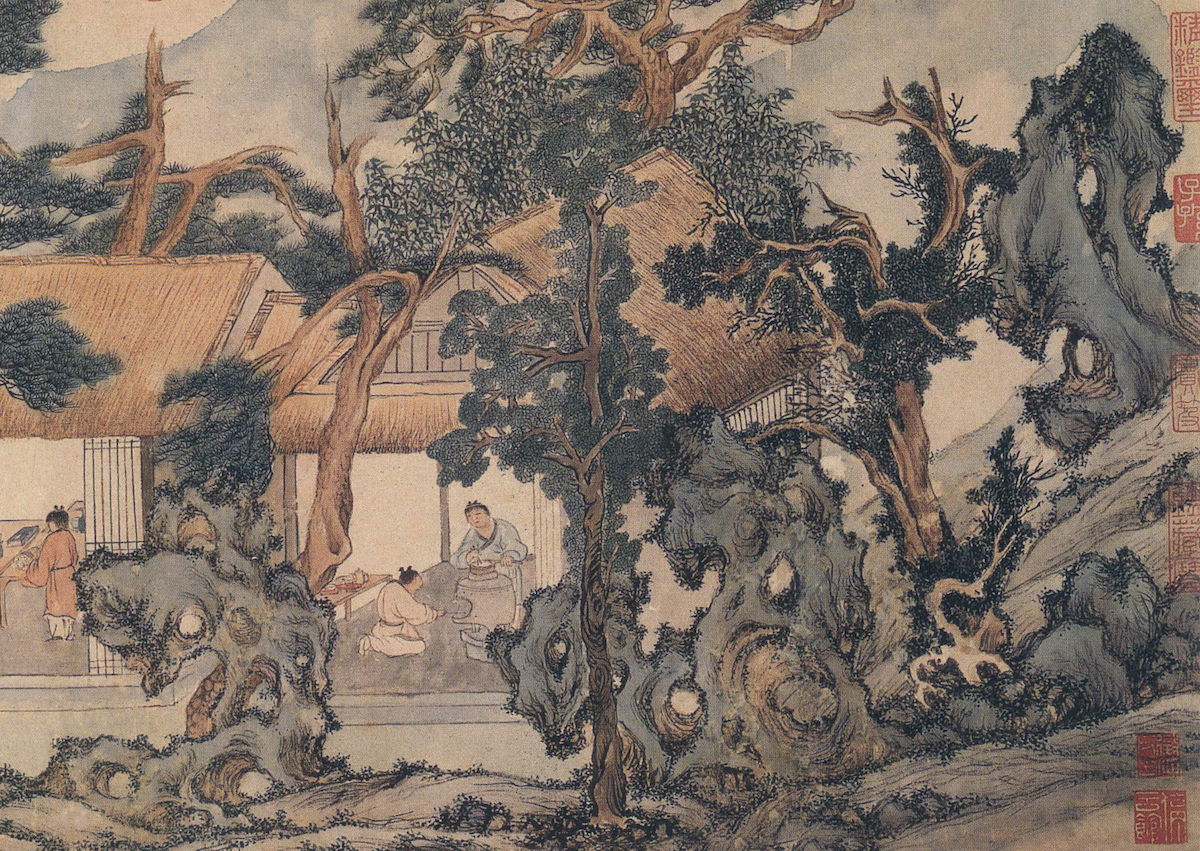
Figure 11 The details of the lake and stone in the "True Appreciation of Zhai Tu" on the blog
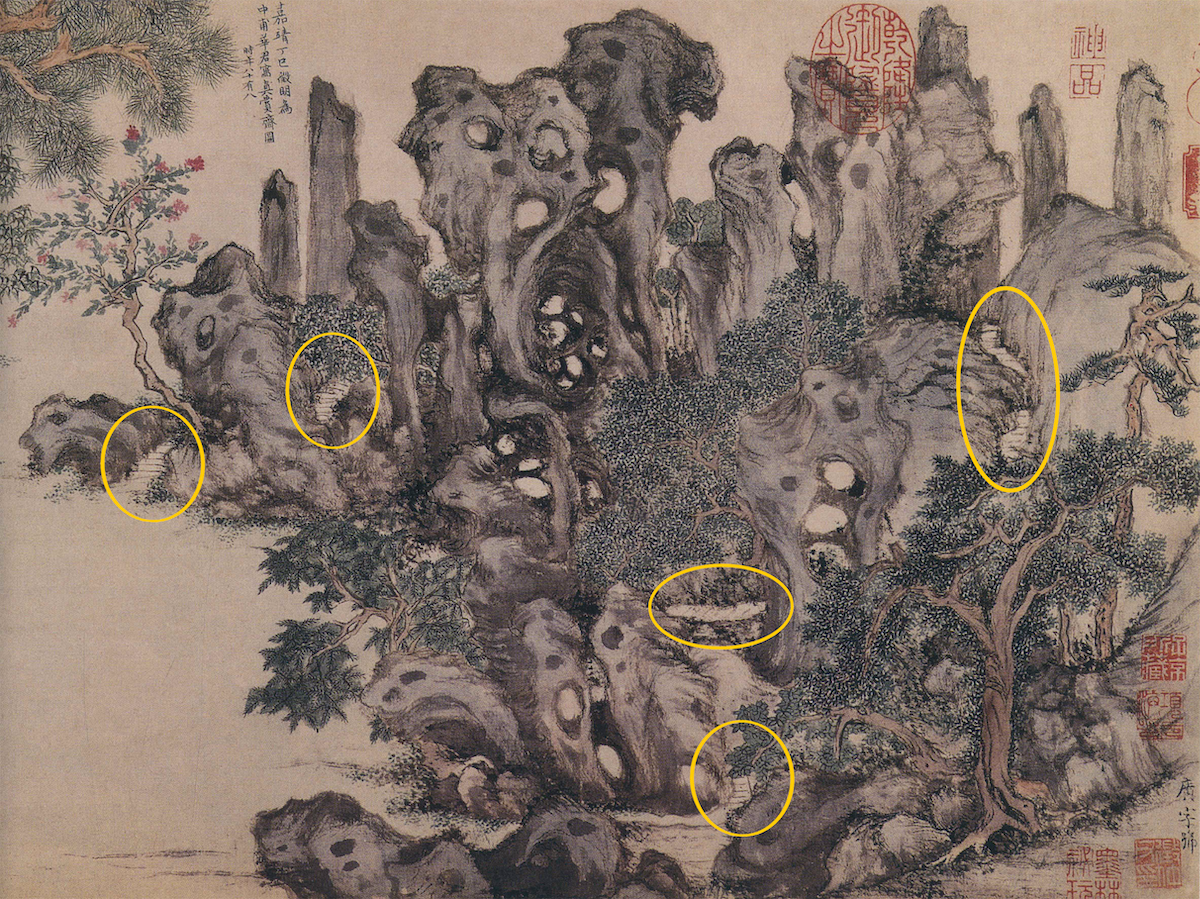
Figure 12 The details of the lake and stone and the "path" in the "True Appreciation of Zhai Tu" in the National Expo
Then, when Wen Zhengming painted Shuangtong in front of the court to replace the original Shuangsong in the "National Expo", did he intentionally let this volume bear the shadow of his jade chime house? When comparing the outdoor scenes of the two volumes of "True Appreciation of Zhai Tu", in addition to the large-scale cutting in space, there are also differences in attributes between natural landscapes and urban gardens. This change is especially reflected in the different states of the two volumes of lake stones. Obviously, the loose lake and rocks in the "Shangbo Ben" are connected with the mounds and rocks (Fig. 11), which is very close to the lake and stone appearance between the natural mountains and rivers in Wang Meng's "Gou District Forest House"; while in the "National Bo Ben" The proportion of lake stones is very large, stacked and gathered, and there are even hidden "stone steps", which belong to the artificially carved garden landscaping (Figure 1 and 2). Huaxia is a native of Dangkou Town, Wuxi City, and its Zhenshangzhai is located on the west coast of Ehu Lake (that is, Goose Zhendang) (Figure 13). The shape of the lake rocks drawn in may be more reasonable. So what kind of information does the change of this element suggest? What kind of connection does it have with Wen Zhengming?
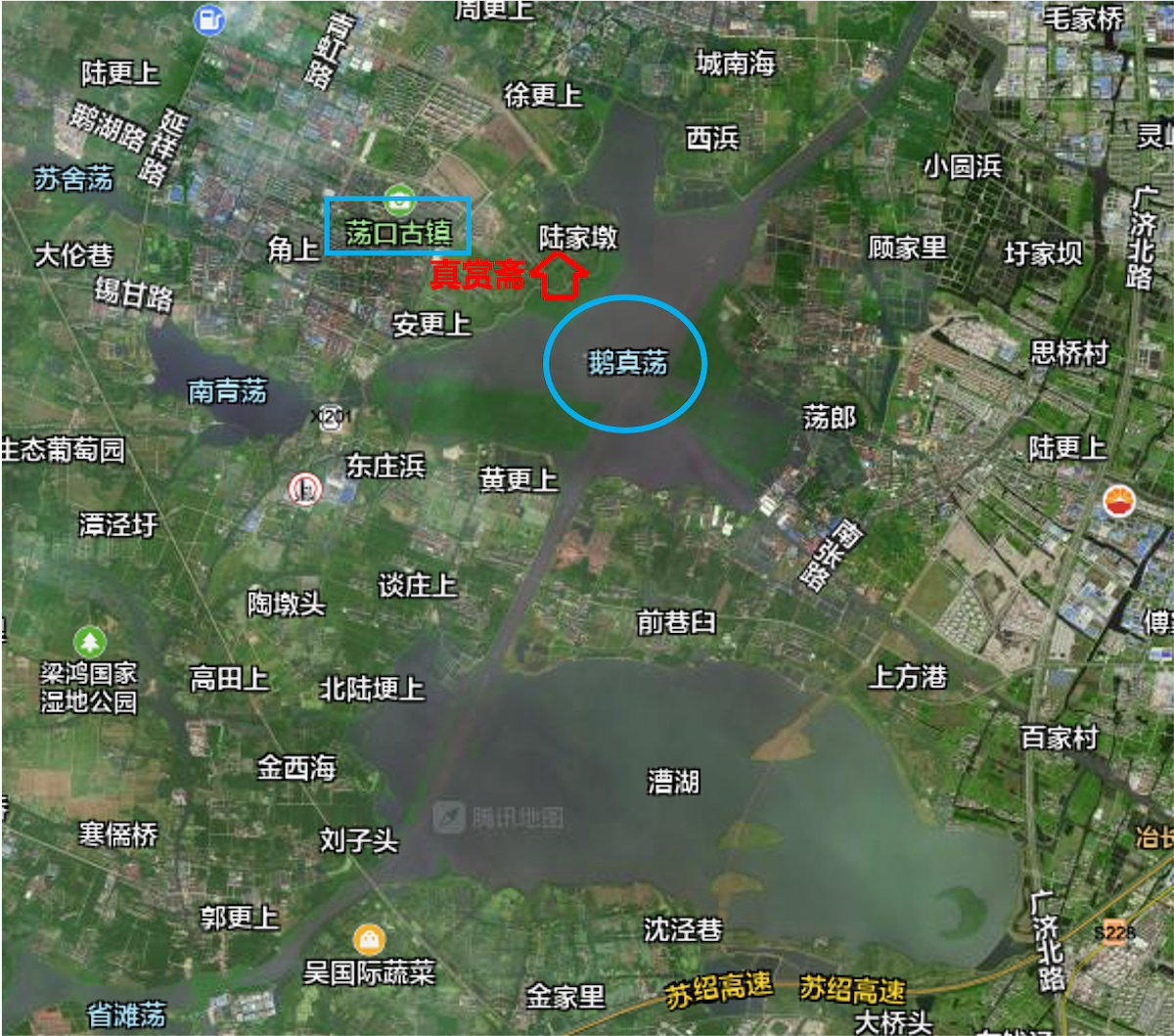
Figure 13 The approximate locations of Ehu, Dangkou Town and Yuanzhen Sangzhai in Google Maps (marked by the author)
The author further noticed that in the second volume of "Futian Ji", Wen Zhengming once concentrated on the scene in the Tingyun Pavilion and composed ten small poems, and he was the first to explain the origin of the poems: It's been a long time, and my brother called Gonggong to fix it. It's a new cut, and it's very refreshing. Sitting alone in the evening, I recite Wang Linchuan's sentence "Sweeping the stone to make the ancient color, wash the song and let the air light", because it is a rhyme, I composed ten small poems .” From this, we can see that the following poems are written according to Wang Anshi’s rhythm for the home space, and two of them are particularly noteworthy:
The stacked stones can't be found, and the empty edge is infinite. ... (Part 1)
The cold day is full of empty courtyards, and the end-of-house households are beginning to open. The strange stone is called for worship, and the Wujing is repaired for washing. Which bosom friend? Intended to call Nangong Mi. (Second)
One of the poems here mentions stacked stones, while the other focuses on "strange rocks" and "indus trees", and also alludes to the allusions of "Mi Fu worshipping stones" and "Ni Zan Xitong". When further questioning who the bosom friend was, he replied that it was Mi Fu, a servant of the Nangong Palace. From this point of view, there are not only stacked strange rocks in Wen Zhengming's building, but this hobby is inseparable from Mi Fu. The appreciation for the strange rocks may be what Wen Zhengming used to think of Mi Fu. a way. So, is it a coincidence that Shuangtong and Strange Stone, who are closely related to Wen Zhengming, appear in the "Guobo Ben" at the same time?
At present, although it cannot be categorically believed that the courtyard space in the "National Expo" is the scene outside Wen Zhengming's Yuqing Mountain House. However, there is indeed an inherent relationship between the two that cannot be ignored. Huaxia's residence is not without these two kinds of objects, and they are also common in garden landscapes in the south of the Yangtze River. However, the selective focus on Shuangtong and Dieshi reveals their special features. They are obviously related to Wen Zhengming's personal experience, so they are replaced and subjectively processed in the picture. When the collections of Wen and Hua gradually flow out, and Wen Zhengming, who is in his twilight years, once again draws a room for his friend, he will inevitably recall his life in the Yuqing Mountain House over the years and his relationship with Huaxia.” Yatong's experience in governance arts, right? Compared with eight years ago, his mood at this time must be more complicated.
Therefore, in the "National Expo Book", Wen Zhengming not only carefully described the collections and appreciation activities in Huaxia Zhai, but also put Shuangtong, which is quite commemorative for him, in it. The strange stone that came to call for the appreciation of sound further connected the friendship between the two and traced it back to Mi Fu, the source of the word "true reward". Therefore, in this sense, Wen Zhengming's meticulously constructed national blog "True Appreciation of Zhai Tu" is not only a biography for Huaxia, but also a kind of memory and writing of the author's shared experience of collecting and collecting. Thus, it carries his and Huaxia's feelings and remembrance of the old time of true appreciation.
V. Remainders: Reflections on the Particularity of the "National Boon"
Judging from the creation of the national blog book "True Appreciation of Zhai Tu", after this picture was moved into Wen Zhengming's personal life experience, the unique meaning hidden in the painting can only be the first reader of the image - it has a unique appreciation for it. Received by Huaxia, who is full of emotions. Therefore, compared with the open and inclusive elegance of the "Shangbo Ben", the "Guo Bo Ben" is more private in terms of visible spatial features and internal intentions. The difference between the two is also the difference between the "National Boon" and the Ming Dynasty alias map, which mainly expresses the nature of "Wenhui". From this point of view, "National Bo Ben" has a special value in the alias map of the Ming Dynasty with the main purpose of "entertainment". It not only makes a breakthrough in the schema, but also breaks away from a relatively fixed expression of interest. Instead, it uses the current state of mind and the experience of sharing with friends, making the interpretation of aliases more three-dimensional and vivid.
But at the same time, it should be noted that Wen Zhengming's feelings expressed in "National Expo" based on his personal life experience and his collection experience with Huaxia can only be shared by the two of them in a specific time and space. When images began to be passed down from generation to generation and changed hands, the deep meaning in the paintings was difficult to become the focus of later collectors.
After Huaxia, the two volumes of "True Appreciation of Zhai Tu" both flowed into the hands of the Xiang family, an emerging force in the field of connoisseurship in the south of the Yangtze River. For Xiang Yuanbian, since he has obtained most of the collections from Wen and Hua, the "Zhen Zhai Zhai Tu" and "Zhen Zhai Zhai Ming", which closely combine Hua Xia and Wen Zhengming, are for him. A natural illustration of the interest of collecting and the relationship between the heritage of the collection. And this kind of mentality is also the reason why Xiang Dushou and his son asked Wen Jia to write the book "True Appreciation Zhai Fu" in the back of the volume, which can be regarded as a kind of extension of cultural identity. Coincidentally, Gao Shiqi, in the inscription at the end of the "National Expo" volume, also expressed the joy of "all in the rest" of the Huaxia collection and Wen Zhengming's "True Appreciation of Zhai Tu":
Wen Taishi's "True Appreciation Zhai Tu Ming" has been in the capital for a few years. At the age of Yisi winter, he obtained Wang Youjun's "Yuan Sheng's Post", and Yihai Xia obtained Zhong Taifu's "Recommended Jizhibiao". If the two things are hidden in Xiangzhen's Zhai, once they are returned, won't there be a lot of them? ...
From this point of view, the key role played by the two volumes of Zhenshangzhai Tu in the collection pedigree is their primary significance to later collectors. However, the emotional construction of "Guobo Ben", which is based on experience, has attracted further attention because of its private characteristics, which cannot accompany the circulation of images. This is not only its special value to the first reader, the subject of the painting, but also determines the transmission and acceptance of this meaning, with strict restrictions on audience and time limit.
(The original title of this article is "Reconstruction and Commemoration of "True Appreciation": The Spatial Changes and Functional Transformation of Wen Zhengming's "True Appreciation Zhai Tu"", the full text was originally published in the "National Museum of China Journal", when The Paper was published Notes not included.)
